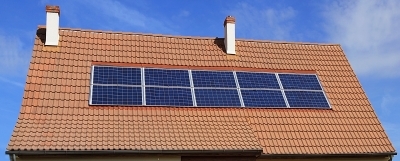Solar Energy
 Without the sun we would have no life. The sun releases more energy in an hour than the world uses in an entire year! There is more than enough energy for all of us, but its power needs to be harnessed.
Without the sun we would have no life. The sun releases more energy in an hour than the world uses in an entire year! There is more than enough energy for all of us, but its power needs to be harnessed.
There are two types of solar panel - Photovoltaic (PV) solar panels or solar water heating panels.
PV solar panels or “photovoltaic cells” turn sunlight directly into electricity using chemicals inside the individual cells. Solar heating panels can be used on people’s homes to directly heat up water for washing and heating in the house. This works as water is pumped through pipes in the solar panel. The panels are black so that they can absorb more heat.
Solar power is a renewable form of energy and solar panels do not produce greenhouse gases. However to create them materials such as silicon are mined and are not renewable, plus they can be expensive and cause environmental damage in the process. Solar panels can be on people’s homes or spread out over a large area such as in fields or in the desert. Mirrors can be used to reflect the sun’s rays and direct them to one place. Energy created can then be stored in large batteries for use at other times - for example, when it’s dark! Solar panels are good in remote areas where it is difficult to get electricity such as in remote parts of Africa and Asia. Camels in the Sahara desert can be used to carry solar powered fridges. Inside are kept important medicines that needed to be kept cool. Solar panels are easy to maintain so once they are there they last a long time.
 Scientists are even trying to work out how to put solar power stations in space! The main problem would be how to get the power back to earth. In the meantime buildings can be designed so that they make the most of the sun’s light and heat, building them so that they face the sun, with large windows - this is extremely effective and is known as passive solar design.
Scientists are even trying to work out how to put solar power stations in space! The main problem would be how to get the power back to earth. In the meantime buildings can be designed so that they make the most of the sun’s light and heat, building them so that they face the sun, with large windows - this is extremely effective and is known as passive solar design.
